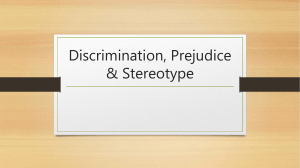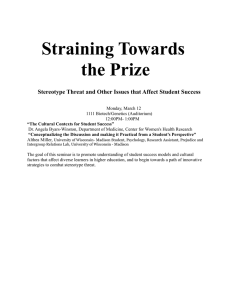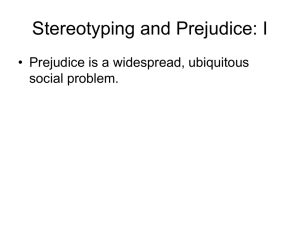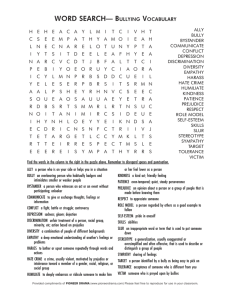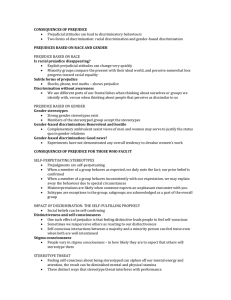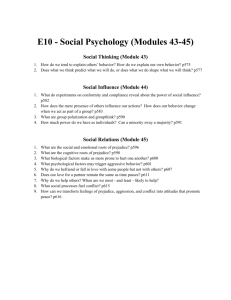Ch 5: Stereotypes, Prejudice, & Discrimination
advertisement
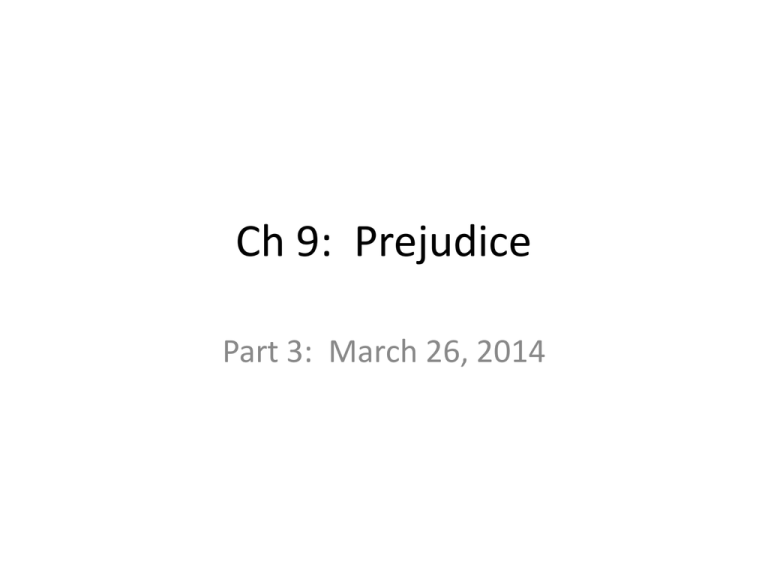
Ch 9: Prejudice Part 3: March 26, 2014 • Stereotype Threat (cont.) • How does stereotype threat affect performance? • How is it studied? • How is stereotype threat manipulated? • What about positive stereotypes? – Results: – How can you protect against stereotype threat? What causes prejudice? • Motivational, Cognitive, & Social factors… – 1) Motivational Factors: • A) Realistic Conflict – • B) Social Identity theory – • C) Intergroup conflict – – Sherif’s ‘Robber’s Cave’ experiment – – What solution reduced the prejudice? What causes prejudice? (cont.) • 2) Cognitive factors – – Outgroup homogeneity effect: • Why does it happen? – Lack of familiarity w/outgroup – Don’t interact w/representative sample – Example of ingroup/outgroup distinctions: • “Blue-eyed/Brown-eyed exercise” by Jane Elliott • Background of the exercise: – Day 1 vs. Day 2 • Effects for the group ‘on the bottom’? – Elliott’s main point? – Criticisms of Elliott’s exercise: What causes prejudice? (cont.) • 3) Social sources – Importance of socialization by parents, peers, media, etc. – Gender stereotype examples • Correlation between parents’ stereotypes & kids’ • Links to parenting behaviors & kids’ play behaviors • Media effects – – Images may indicate how men/women should look – Research evidence of ‘face-ism’ • What is this effect? • Archer’s research on face-ism – Gender differences - – Perceptions of the target?
